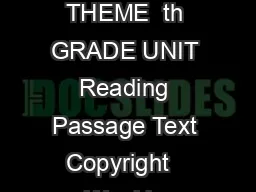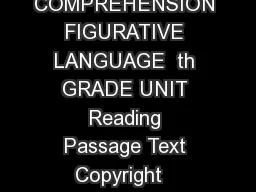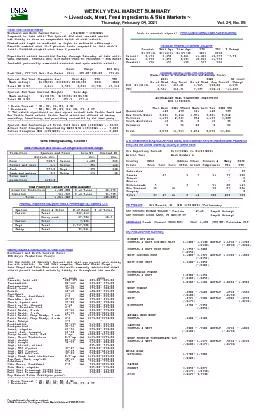PPT-BA1a Weekly Journal
Author : rouperli | Published Date : 2020-08-28
Maciej Nowakowski AnneLouis Girodet de RoussyTrioson Burial of Atala 1808 Benjamin Carre Dark Time Comic cover Light analysis This is a comic cover by Benjamin
Presentation Embed Code
Download Presentation
Download Presentation The PPT/PDF document "BA1a Weekly Journal" is the property of its rightful owner. Permission is granted to download and print the materials on this website for personal, non-commercial use only, and to display it on your personal computer provided you do not modify the materials and that you retain all copyright notices contained in the materials. By downloading content from our website, you accept the terms of this agreement.
BA1a Weekly Journal: Transcript
Download Rules Of Document
"BA1a Weekly Journal"The content belongs to its owner. You may download and print it for personal use, without modification, and keep all copyright notices. By downloading, you agree to these terms.
Related Documents











![[EBOOK] 2021 Monthly/ Weekly Planner: Chaos Coordinator Leopard Navy Floral Monthly Weekly](https://thumbs.docslides.com/1004920/ebook-2021-monthly-weekly-planner-chaos-coordinator-leopard-navy-floral-monthly-weekly-pocket-planner-doodle-calendar-life-planner-2021-weekly-planners.jpg)
![[EBOOK] Farmhouse Plaid 2021 Weekly Planner: 2021 Weekly /Monthly Planner Doodle Calendar](https://thumbs.docslides.com/1005268/ebook-farmhouse-plaid-2021-weekly-planner-2021-weekly-monthly-planner-doodle-calendar-life-planner-2021-weekly-planners.jpg)
![[READ] 2021 Monthly/ Weekly Planner: It\'s Fine I\'m Fine everything is fine Vintage typewriter](https://thumbs.docslides.com/1005579/read-2021-monthly-weekly-planner-it-s-fine-i-m-fine-everything-is-fine-vintage-typewriter-monthly-weekly-pocket-planner-doodle-calendar-life-planner-2021-weekly-planners.jpg)
![[READ] 2021 Monthly Weekly Planner: Forever is composed of nows Emily Dickinson 2021 Weekly](https://thumbs.docslides.com/1005580/read-2021-monthly-weekly-planner-forever-is-composed-of-nows-emily-dickinson-2021-weekly-monthly-pocket-planner-doodle-calendar-2021-weekly-planners.jpg)